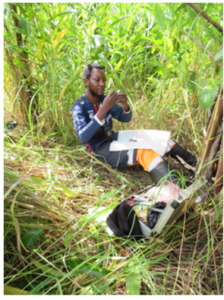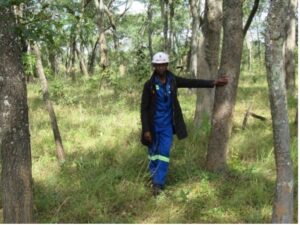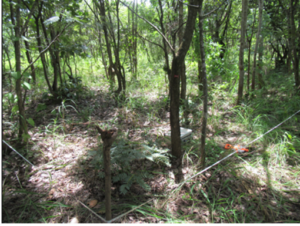
VLIR-UOS project PhD: Assembly and functioning of termite communities along a forest recovery gradient in Miombo forest.
Tresor Kisimba’s thesis project summary
Miombo ecosystems are dry woodlands spanning much of central and southern Africa.

These ecosystems are under increasing pressure from human activities. Rural communities rely heavily on Miombo forests for both income and subsistence. The degradation of Miombo is primarily driven by social (e.g., agriculture) and economic (e.g., charcoal production and mining) factors, particularly in the Katangan Copper Arc. This anthropogenic pressure is significantly accelerating biodiversity loss within Miombo ecosystems.

Termites are the dominant invertebrate group in Miombo woodlands, performing numerous essential ecological functions. Often referred to as ecosystem engineers, termites play a crucial role in nutrient cycling, decomposition, soil fertility enhancement, and water circulation improvement. However, habitat degradation in Miombo is expected to have a profound impact on termite populations and their ecological roles.
The main aim of my doctorate is to examine the impact of land-use changes in Miombo woodlands on the community composition and functioning of termites as ecosystem engineers. Fieldwork will take place in the southeastern part of the Katangan Copper Belt in the Democratic Republic of Congo. The primary objective is structured around four specific goals:
- Characterizing termite biodiversity and community assembly along a Miombo forest recovery gradient.
- Analyzing the spatial distribution of mound-building Cubitermes and Macrotermes termites along a Miombo forest recovery gradient.
- Testing intra- and inter-specific differences in termite feeding behavior using stable isotope profiling (δ13C and δ15N) across land-use gradients.
- Assessing the impact of Macrotermes falciger termites on the carbon cycle in Miombo forests.
